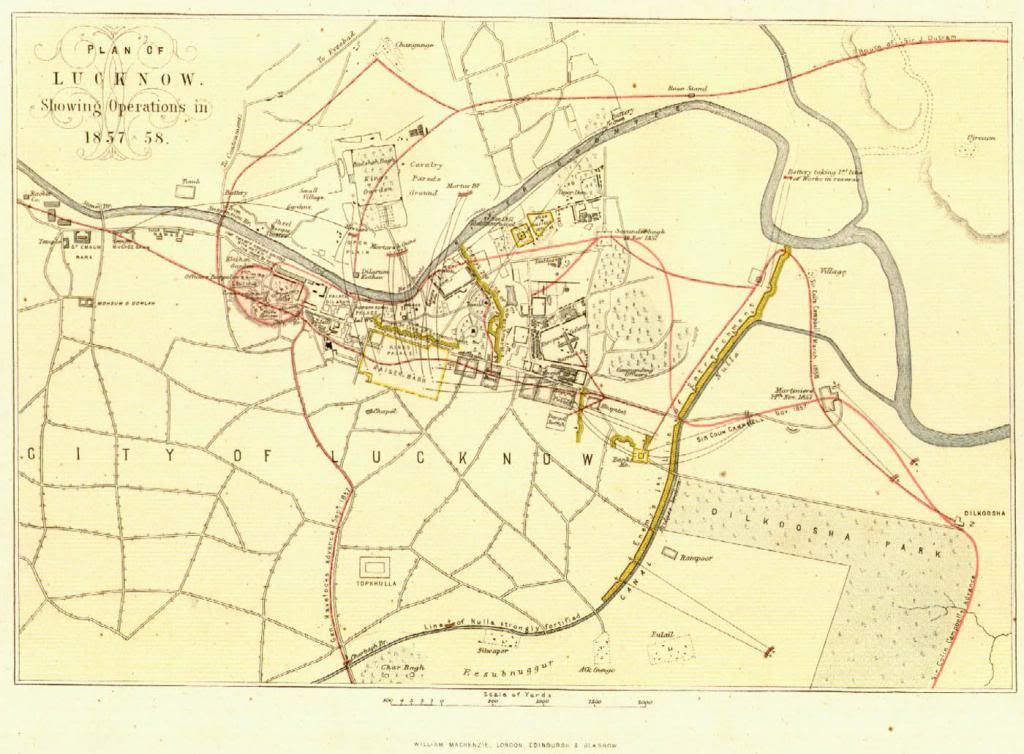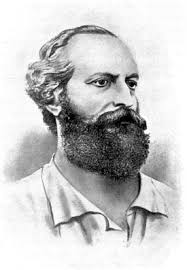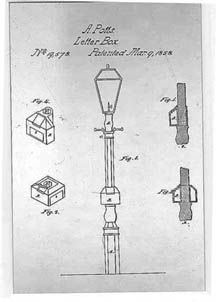The Republic
April 1858
International News
British retake Lucknow

Lucknow, Oudh - On 21 March, British forces recaptured the city of Lucknow which they had abandoned in the previous winter after the relief of a besieged garrison in the Residency. During the winter months Sir Colin Campbell, who was in command of the evacuation, re-established communications with Delhi and Calcutta and with fresh reinforcements from Britain and a substantial transport and supply column in place crossed the Ganges River in late February.
Campbell's army consisted of seventeen infantry battalions, twenty-eight calvary squadrons and 1234 guns and mortars, with a large and unwieldy baggage train and large numbers of native camp followers. Campbell kept a rendezvous with Sir James Outram at Alambagh, a walled park two miles south of Lucknow.
The army was then reorganized into three infantry divisions under Outram, Brigadier Walpole and Brigadier Lugard, and a calvary division under James Hope Grant. Meanwhile a force of 9,000 Nepalis commanded by Brigadier Franks was approaching Lucknow from the North.
The defenders of Lucknow were said to number 100,000. Despite their numbers, the defenders lacked coordinated leadership, and were largely the personal retinues of landowners and loosely organized bodies of fighters, whose motives, dedication and equipment varied widely. The rebels were equipped with large numbers of cannon and had heavily fortified the Charbagh Canal, the city and the palaces and mosques adjoining the Residency to the north of the city. They had not fortified the norther approaches to the city on the north bank of the Gumti River, which had not seen fighting during the British relief efforts in 1857.
 Map showing Cambell's campaign to recapture Lucknow
Map showing Cambell's campaign to recapture Lucknow
Campbell began by repeating his moves of the relief of the Residency the previous year. He moved to the east of the city and Charbagh Canal to occupy the walled Dikusha Park. This time, however, he suffered from rebel artillery fire until his own guns could be brought up.
On 5 March, Campbell's engineers constructed two pontoon bridges across the Gumti. Outram's division crossed to the north bank, and by 9 March, they were established north of the city. Under covering fire from his siege guns, his division captured the grandstand of the King of Oud's racecourse (known as the Chakar Kothi). Meanwhile, Campbell's main body captured La Martiniere, formerly a school for the children of British civilians) and forced their way across the Charbagh Canal with few casualties.
By 11 March, Outram captured two bridges across the Gumti near the Residency. Campbell occupied an enclosed palace and mosque which had seen heavy fighting the previous November. In front of him was a block of palace buildings, collectively known as the Begum Kothi. The rebels lost 600-700 during fighting for this structures. Over the next three days, Campbell's engineers and gunners blasted and tunneled their way through the buildings between the Begum Kothi and the main rebel position in the King of Oudhs palace. The main assault on the palace took place on 14 March.
By now, most of the rebels were abandoning Lucknow and scattering into the countryside. There were rebel counter-attacks on the Alambagh and the British positions north of the Gumti, but they failed. A rebel force which was supposed to contain Begum Hazrat Mahal, one of the wives of the dispossessed King, and her son Birjis Qadra whom the rebels had proclaimed King in his father's place, was driven from the Musabagh, another walled palace four miles northwest of Lucknow.
The last rebels, 1,200 men under a noted leader, Ahmadullah Shah, also known as the Maulvi of Faizabad, were driven from a fortified youse in the center of the city on 21 March. The city was declared cleared on this date.
Orsini calmly loses head

Paris - Felice Orsini, who was sentenced to death for his bomb attack against Louis Napoleon III, the Emperor of France, calmly went to the guillotine on 13 March. It is said that while awaiting his execution, Orsini penned a letter to Napoleon III, the leader he sought to assasinate, exhorting him to take up the cause of Italian independence, a cause Napoleon III had supported in his youth.
His co-conspirators in the plot also have been sentenced. Like Orsini, Giuseppe Pieri and Carlo di Rudio will face the guillotine. Antonio Gomez was sentenced to hard labor for life.
Fight over state school brings down Dutch government
Holland -- After two years of failing to find a compromise between liberals and conservatives and anti-revolutionaries, the ministry of J. J. L. Van der Brugghen has resigned.
There has been ongoing political and religious strife, dividing the people of Holland into hostile camps regarding the question of whether state schools should be "mixed" i.e. neutral schools, where only those simple truths which were common to all denominations should be taught; or should be "separate" i.e. denominational schools, in which religious instruction should be given in accordance with the wishes of the parents.
Van der Brugghen made an effort to conciliate opposition. His school law was presented in 1857 upholding the principle of "mixed" schools, but with the proviso that subsidized separate schools could be established by law for children whose parents had conscientious scruples against a neutral mixed school.
Although the law passed, despite much contention in both chambers of Parliament, the infighting has continued compelling Van der Brugghen to resign.
National News
Perry passes away

New York - Rear Admiral Matthew Perry, who helped capture the cities of Frontera, Tabasco and Tampico during the Mexican War and opened trade with Japan during his expedition of 1852-1854 died in New York City of rheumatism that had spread to the heart on 4 March. He was 64. Perry was interred in a vault on the grounds of St. Mark's Church in-the-Bowery.
Street mailbox receives patent
Philadelphia - Iron products manufacturer Albert Potts received the patent for a design for a lamppost mounted mailbox so that instead of going to the post office, people can drop their letters in the mounted mailbox.
 Potts patented lamppost mounted mailbox
Potts patented lamppost mounted mailbox